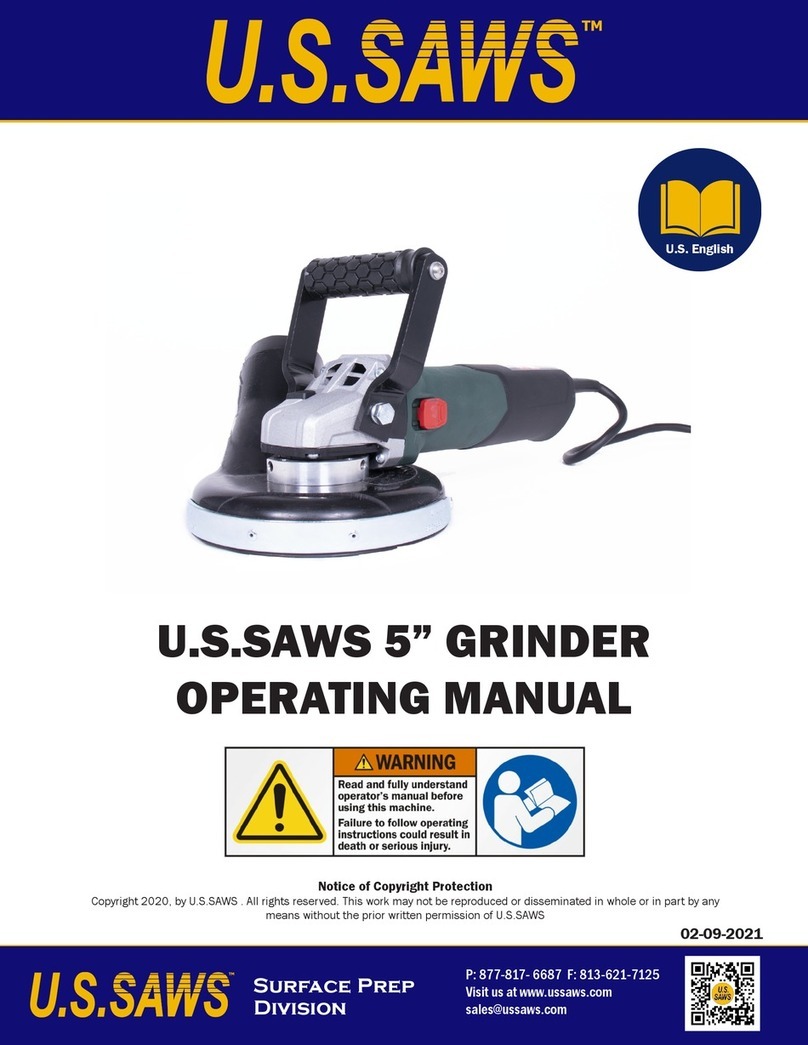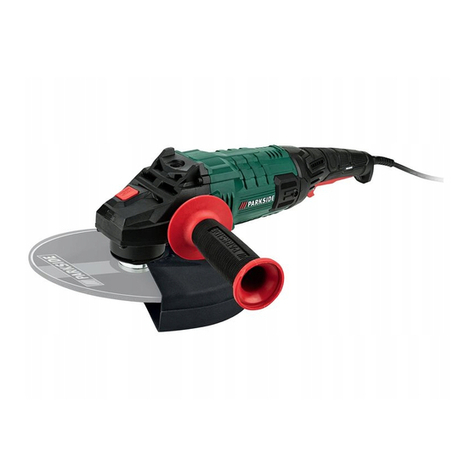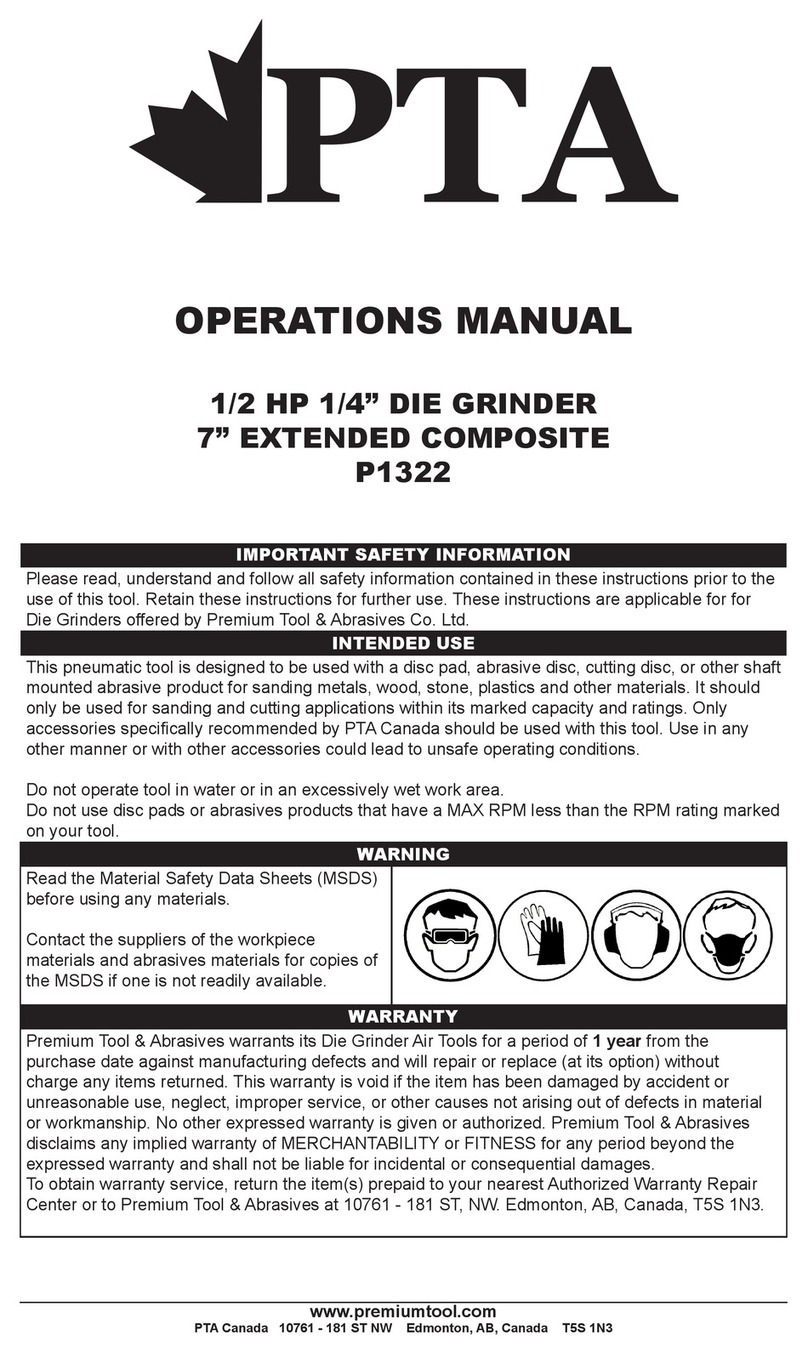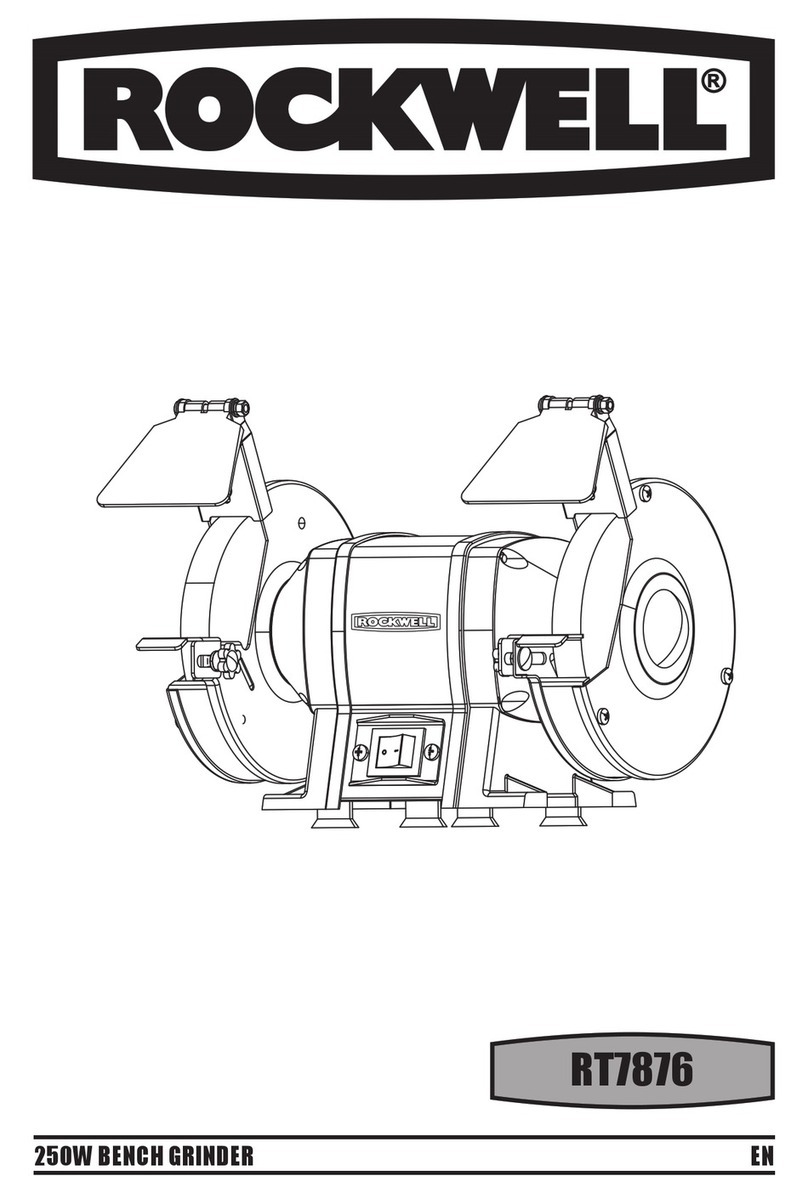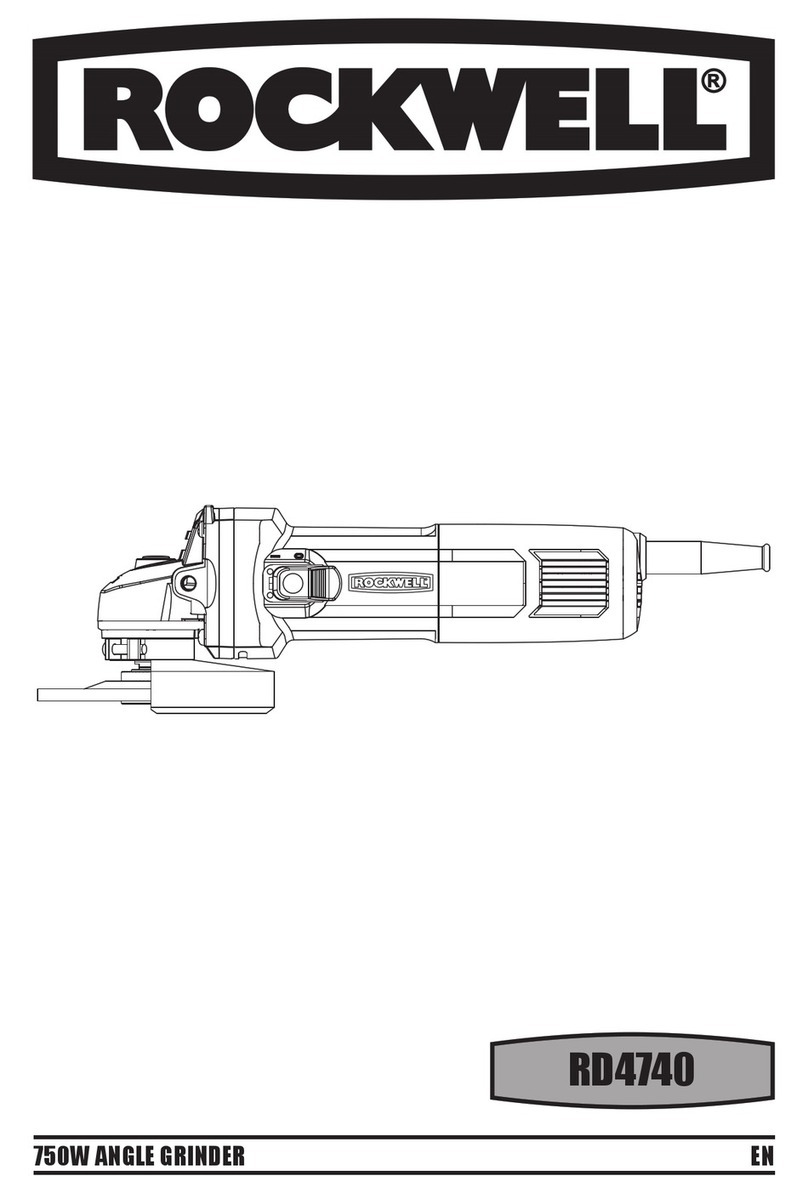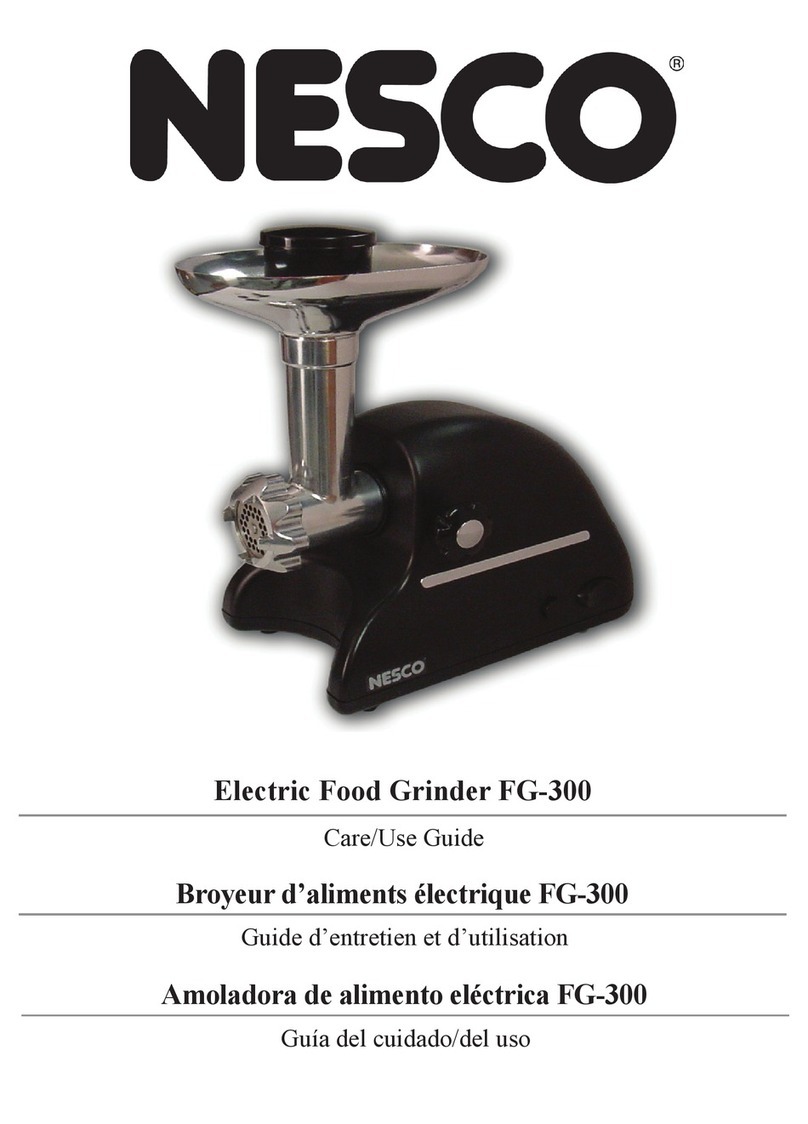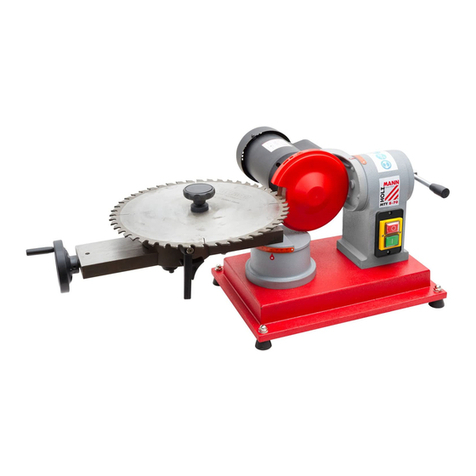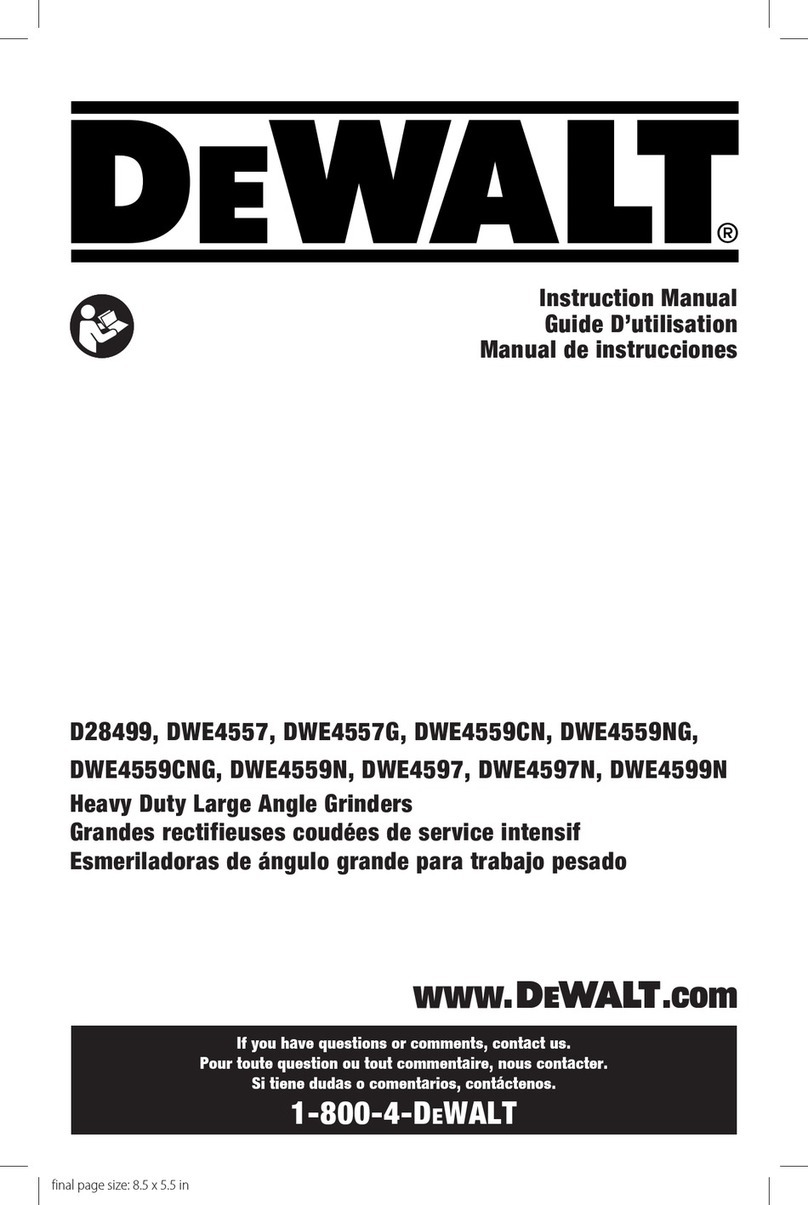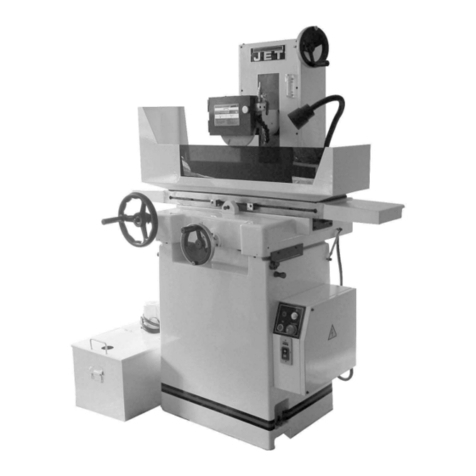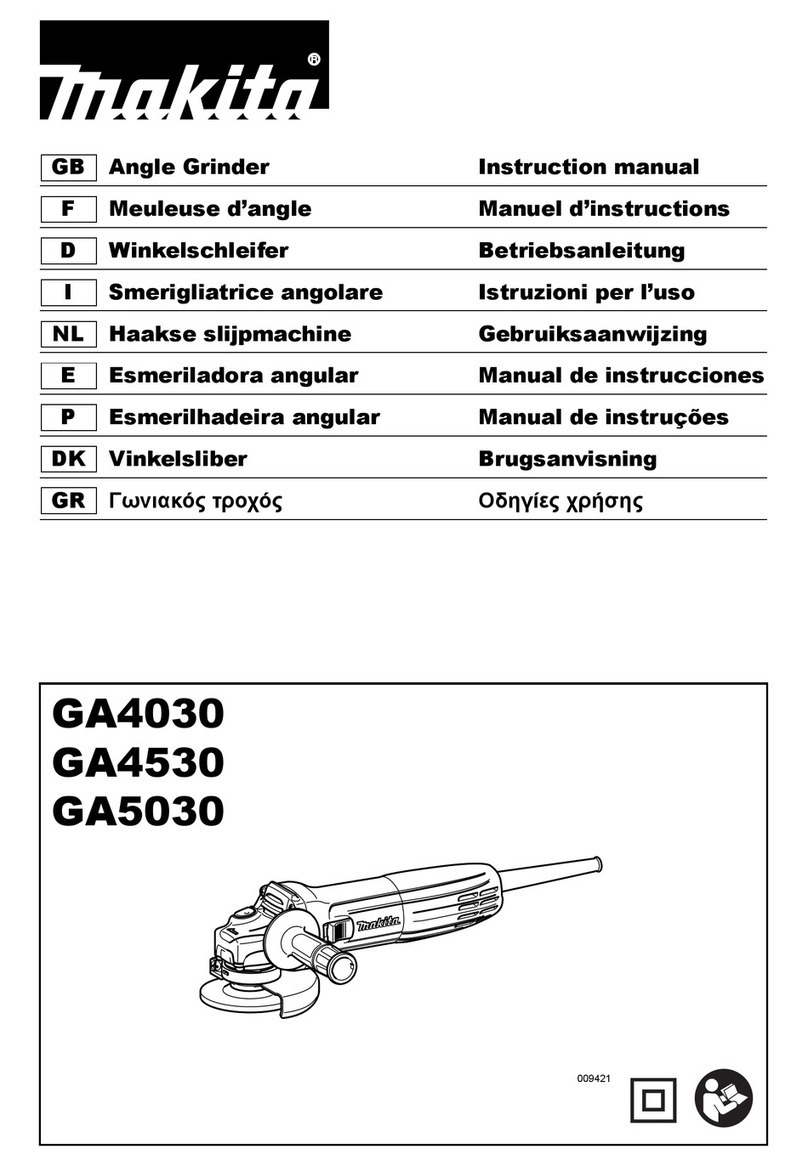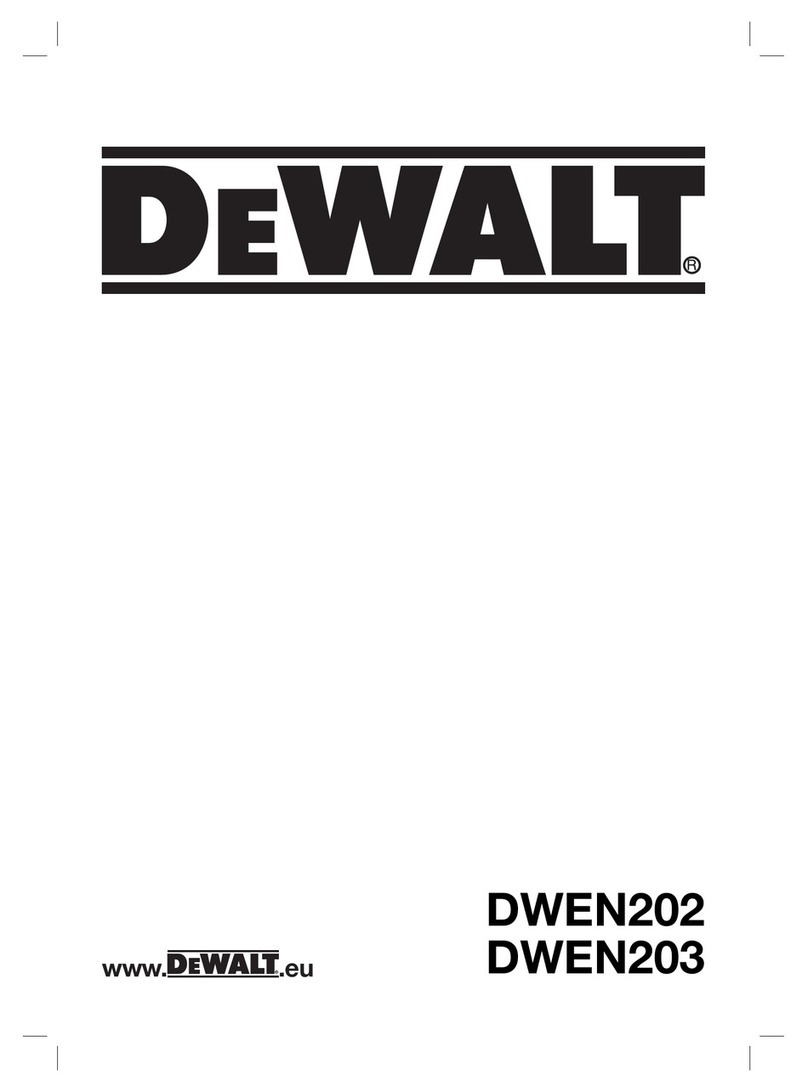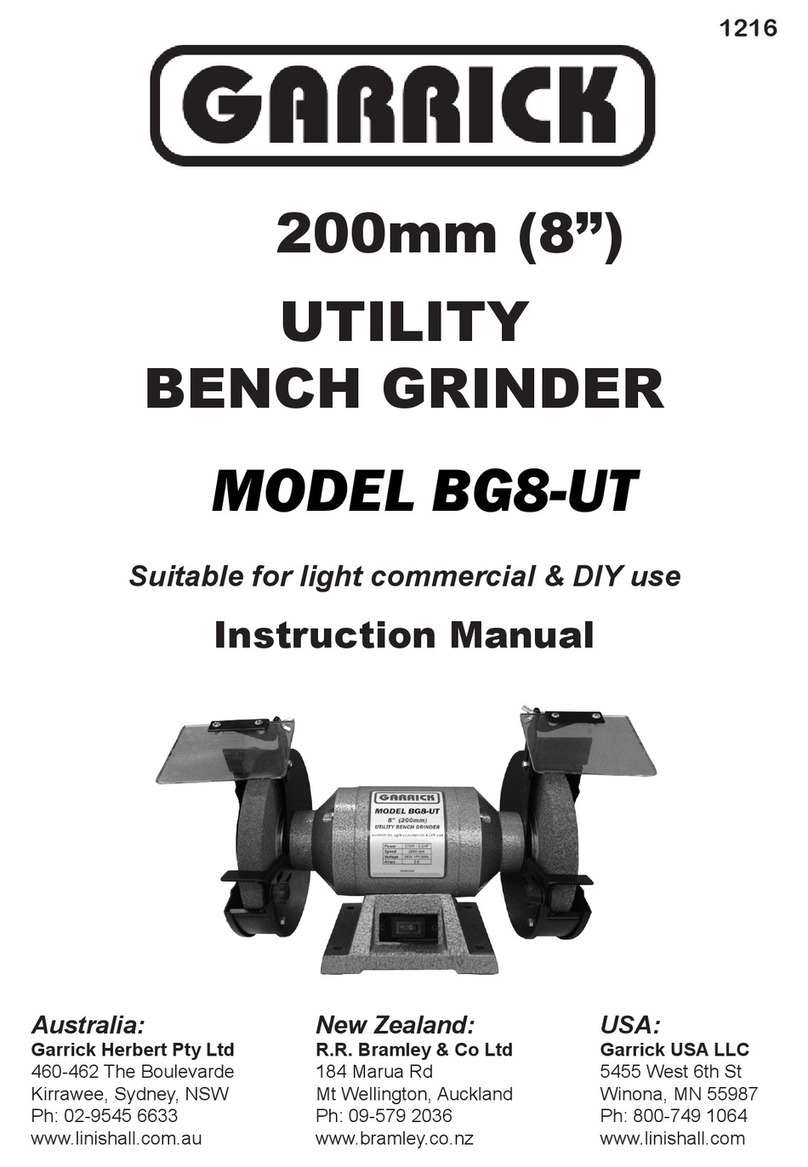SAVE THESE INSTRUCTIONS
1. WORK AREA
- KEEP YOUR WORK AREA CLEAN AND WELL LIT. Clut-
tered benches and dark areas invite accidents.
- DO NOT OPERATE POWER TOOLS IN EXPLOSIVE ATMO-
SPHERES, SUCH AS IN THE PRESENCE OF FLAMMABLE
LIQUIDS, GASES OR DUSTS. Power tools create sparks
which may ignite the dust or fumes.
- KEEP BY-STANDERS, CHILDREN, AND VISITORS AWAY
WHILE OPERATING A POWER TOOL. Distractions can
cause you to lose control.
2. ELECTRICAL SAFETY
- DOUBLE INSULATED TOOLS ARE EQUIPPED WITH A
POLARIZED PLUG (ONE BLADE IS WIDER THAN THE
OTHER.) THIS PLUG WILL FIT IN A POLARIZED OUTLET
ONLY ONE WAY. IF THE PLUG DOES NOT FIT FULLY IN
THE OUTLET, REVERSE THE PLUG. IF IT STILL DOES NOT
FIT, CONTACT A QUALIFIED ELECTRICIAN TO INSTALL A
POLARIZED OUTLET. DO NOT CHANGE THE PLUG IN ANY
WAY. Double Insulation eliminates the need for the
three wire grounded power cord and grounded
power supply system. Before plugging in the tool,
be certain the outlet voltage supplied is within the
voltage marked on the nameplate. Do not use “AC
only” rated tools with a DC power supply.
- AVOID BODY CONTACT WITH GROUNDED SURFACES
SUCH AS PIPES, RADIATORS, RANGES AND REFRIGERA-
TORS. There is an increased risk of electric shock
if your body is grounded. If operating the power
tool in damp locations is unavoidable, a Ground
Fault Circuit Interrupter must be used to supply the
power to your tool. Electrician’s rubber gloves and
footwear will further enhance your personal safety.
- DON’T EXPOSE POWER TOOLS TO RAIN OR WET CONDI-
TIONS. Water entering a power tool will increase the
risk of electric shock.
- DO NOT ABUSE THE CORD. NEVER USE THE CORD TO
CARRY THE TOOLS OR PULL THE PLUG FROM AN OUTLET.
Keep cord away from heat, oil, sharp edges or mov-
ing parts. Replace damaged cords immediately.
Damaged cords increase the risk of electric shock.
- WHEN OPERATING A POWER TOOL OUTSIDE, USE AN
OUTDOOR EXTENSION CORD MARKED “W-A” OR “W”.
These cords are rated for outdoor use and reduce
the risk of electric shock. Refer to the “Recom-
mended sizes of Extension Cords” in the Accessory
section of this manual.
- GROUNDED TOOLS MUST BE PLUGGED INTO AN OUTLET
PROPERLY INSTALLED AND GROUNDED IN ACCORDANCE
WITH ALL CODES AND ORDINANCES. NEVER REMOVE
THE GROUNDING PRONG OR MODIFY THE PLUG IN ANY
WAY. Do not use any adapter plugs. Check with
a qualified electrician if you are in doubt as to
whether the outlet is properly grounded. If the tool
should electrically malfunction or break down,
grounding provides a low resistance path to carry
electricity away from the user.
3. PERSONAL SAFETY
- STAY ALERT. WATCH WHAT YOU ARE DOING AND USE
COMMON SENSE WHEN OPERATING A POWER TOOL.
Do not use tool while tired or under the influence
of drugs, alcohol, or medication. A moment of inat-
tention while operating power tools may result in
serious personal injury.
- DRESS PROPERLY. DO NOT WEAR LOOSE CLOTHING OR
JEWELRY. Contain long hair. Keep your hair, clothing,
and gloves away from moving parts. Loose clothes,
jewelry, or long hair can be caught in moving parts.
Keep handles dry, clean and free from oil and
grease. Rubber gloves and non-skid footwear are
recommended when working outdoors.
- AVOID ACCIDENTAL STARTING. BE SURE SWITCH IS
“OFF” BEFORE PLUGGING IN. Carrying tools with your
finger on the switch or plugging in tools that have
the switch “ON” invites accidents. Do not use a tool
if the power switch does not turn it “ON” and “OFF”.
- REMOVE ALL ADJUSTING KEYS AND WRENCHES. Make
a habit of checking that adjusting keys, wrenches,
etc. are removed from the tool before turning it
“ON”.
- DO NOT OVERREACH. KEEP PROPER FOOTING AND
BALANCE AT ALL TIMES. Proper footing and balance
enable better control of the tool in unexpected
situations.
- USE SAFETY EQUIPMENT. ALWAYS WEAR EYE PROTEC-
TION. Dust mask, non-skid safety shoes, hard hat,
or hearing protection may be used for appropriate
conditions.
- KEEP HANDS AWAY FROM ALL CUTTING EDGES AND
MOVING PARTS.
- IF DEVICES ARE PROVIDED FOR THE CONNECTION OF
DUST EXTRACTION AND COLLECTION FACILITIES, EN-
SURE THESE ARE CONNECTED AND PROPERLY USED. Use
of these devices can reduce dust-related hazards.
4. TOOL USE AND CARE
- USE CLAMPS OR OTHER PRACTICAL WAYS TO
SECURE AND SUPPORT THE WORK-PIECE TO A STABLE

